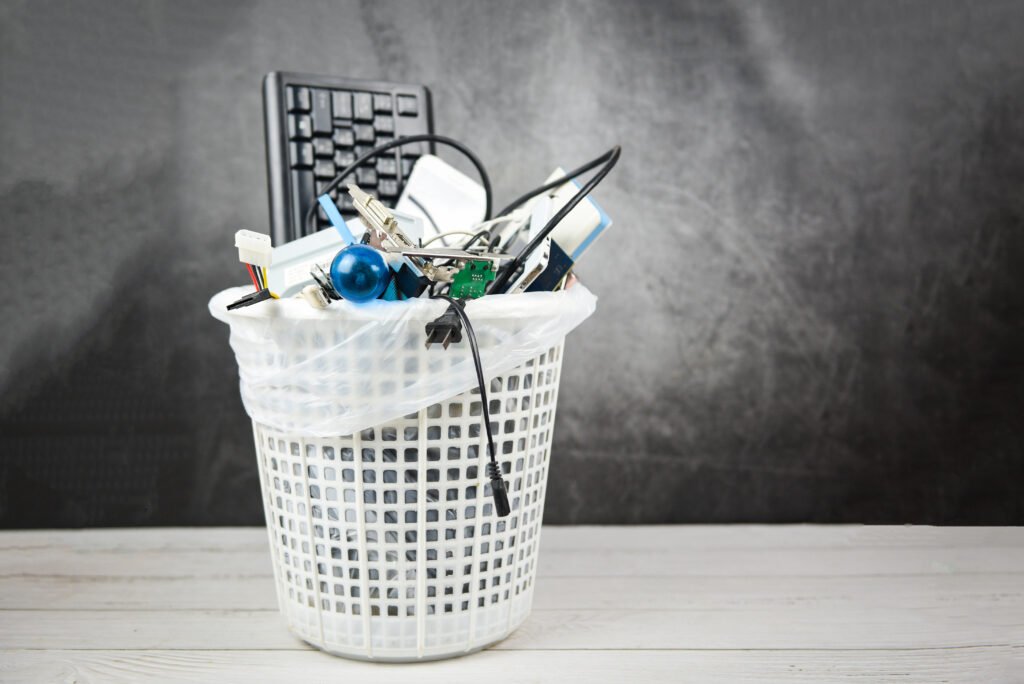NOTE:
On November 2, 2022, the Ministry of Environment, Forest and Climate Change of India published the “E-Waste (Management) Rules, 2022.” These Rules replace the current E-Waste (Management) Rules, 2016 and comes into effect on April 1, 2023. See more details below.
India publishes New E-Waste Management Rules with expanded target products
On May 20, 2022, the Ministry of Environment, Forest and Climate Change of India announced a draft on new regulation to replace the current E-Waste (Management) Rules, 2016. In addition to information technology and telecommunication equipment and consumer electrical equipment, large and small electrical equipment, electrical tools, and medical equipment have been newly added to the target products. Besides, the collection target (recycling target), which is one of the obligations of producers, will be partially compensated by the purchase of EPR certificates, and environment compensation will be imposed in the case of violation of the regulations. The recycling target has been set at 80% for FY2024 onward and EPR certificate transactions and submission of annual reports are implemented and managed through an online portal provided by the Central Pollution Control Board (CPCB). Note that the provisions of the Producer Responsibility Organization (PRO) have been deleted. Comments on the proposal are invited for a period of 60 days, and no effective date has yet been proposed.
The new E-Waste (Management) Rules (draft) can be downloaded from the following URL (in Hindi and English).
https://egazette.nic.in/WriteReadData/2022/235903.pdf
Target products (*partial excerpt of new addition, see Schedule I)
- Information technology and telecommunication equipment [Item code: ITEW1 to 25]
- Consumer Electrical and Electronics and Photovoltaic Panels [Item code: CEEW1-18]:
Screens, monitors, video cameras, video recorders, audio amplifiers, solar panels, etc. - Large and Small Electrical and Electronic Equipment [Item code: LSEEW1-29]:
Large cooling appliances, freezers, clothes dryers, dishwashers, electric cookers, electric stoves, electric hot plates, electric fans, vacuum cleaners, irons, smoke detectors, thermostats, etc. - Electrical and Electronic Tools (With the exception of large- Scale Stationary Industrial Tools) [Item code: EETW1-8]:
Drills, saws, sewing machines, tools for mowing or other gardening activities, tools for welding, soldering, or similar use, etc. - Toys, Leisure and Sports Equipment [Item code: EETW9-14]:
Hand-held video games consoles, video games, sports equipment with electric or electronic components, Computers for biking, diving, running, rowing, etc. - Medical Devices (with the exception of all implanted and infected products) [Item code: MDW1-10]:
Radiotherapy equipment, cardiology equipment, dialysis equipment, pulmonary ventilators, laboratory equipment for in vitro diagnosis, analysers, MRI & ultrasound equipment, etc.
EPR certificate transactions (Article 20):
- A producer can purchase EPR certificates limited to its EPR liability of current year plus any leftover liability of preceding years plus 10% of the current year liability.
- The availability, requirement and other details of the EPR certificate will be made available on the portal.
- All transactions shall be recorded and submitted by the producers/recyclers on the online portal at the time of filing quarterly returns.
Environment Compensation (Article 28):
If the regulations are violated, environmental compensation must be paid. Payment of environment compensation shall not absolve the Producers of the EPR obligation set out in these regulations. The unfulfilled EPR obligation for a particular year will be carried forward to the next year and so on and up to 3 years. In case, the shortfall of EPR obligation is addressed after 1 year, 85% of the environment compensation levied shall be returned to the Producers, In case, the shortfall of EPR obligation is addressed after 2 year, 60% of the environment compensation levied shall be returned, and in case, the shortfall of EPR obligation is addressed after 3 year, 30% of the environment compensation levied shall be returned, thereafter no EC will be returned to the producer. The guidelines for environment compensation shall be developed separately by the CPCB.
Recycling targets (Schedules III and III (A)):
Schedule III:
| Sl. No. | Fiscal Year | e-Waste Recycling Target (Weight) |
| (i) | 2022-2023 | 60% of the quantity of waste generation as indicated in EPR Plan |
| (ii) | 2023-2024 | 70% of the quantity of waste generation as indicated in EPR Plan |
| (iii) | 2024-2025 onward | 80% of the quantity of waste generation as indicated in EPR Plan |
Note: The importers of used electrical and electronic equipment will have 100% EPR obligation for the imported material after end of life, if not re-exported.
Schedule III (A): Extended Producer Responsibility targets for producers, who have started sales operations recently, i.e. number of years of sales operations is less than average life of their products mentioned in the guidelines issued by Central Pollution Control Board from time to time.
| Sl. No. | Fiscal Year | e-Waste Recycling Target (Weight) |
| (i) | 2022-2023 | 15% of the sales figure of financial year 2020-21 |
| (ii) | 2023-2024 | 15% of the sales figure of financial year 2020-21 |
| (iii) | 2024-2025 | 20% of the sales figure of financial year 2020-21 |
| (iv) | 2025-2026 onward | 20% of the sales figure of the financial year two years back |
Address to submit comments (use the following address or send by email)
Secretary, Ministry of Environment, Forest and Climate Change, Indira Paryavaran Bhawan, Jor Bagh Road, Aliganj, New Delhi – 110003
vinodsingh.77@gov.in
Related articles:
India discloses information on amount of Generation and Collection/Recycling of e-waste from FY2017 to FY2019
E-waste Management in India
 India announces draft on New E-Waste Management Rules
India announces draft on New E-Waste Management Rules 

























